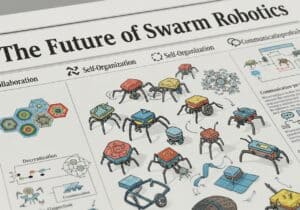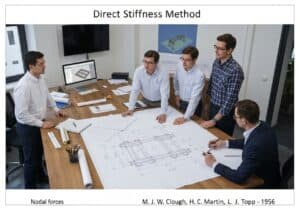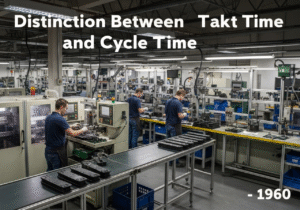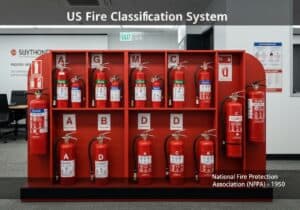
Swarm robotics investigates decentralized control mechanisms enabling large groups of robots to perform complex tasks collectively. Multi-robot coordination relies on distributed algorithms and consensus protocols to achieve formation control and collision avoidance. Stigmergy and bio-inspired algorithms guide self-organization and adaptive behavior within robotic swarms. Communication protocols facilitate robust information exchange, supporting task allocation and distributed sensing. Scalability and fault tolerance remain critical challenges in heterogeneous swarm systems.
This is our latest selection of worldwide publications and patents in english on Swarm Robotics, between many scientific online journals, classified and focused on swarm robotic, decentralized control, swarm intelligence, multi-robot coordination, distributed algorithm, robotic flocking, stigmergy, consensus algorithm, formation control, collision avoidance, robot localization, robot task allocation, robot communication protocol, robot self-organization, robot swarm scalability, bio-inspired algorithm, robotic exploration, distributed sensing, robotic aggregation, swarm robotics simulation, robotic path planning, robotic swarm navigation, robotic swarm deployment, robot adaptive behavior, robotic swarm learning, distributed decision making, robotic swarm mapping and heterogeneous swarm systems.
Path Planning and Optimization of Space Robots on Satellite Surfaces Based on an Improved A* Algorithm and B-Spline Curves
Published on 2025-10-21 by Xingchen Liu, Wenya Zhou, Changhao Zhai, Silin Ge, Zhengyou Xie @MDPI
Abstract: Space robots are vital for in-orbit maintenance of large satellites, but dense payloads and complex surface structures pose challenges for safe crawling operations. This study proposes an improved trajectory planning framework for three-dimensional satellite surfaces. In the path search stage, the traditional A* algorithm is enhanced with traction cost, reflecting surface adhesion, and proximity cost, ensuring collision avoidance. The resulting comprehensive cost function integrates path length,[...]
Our summary: This study presents an enhanced A* algorithm for path planning on satellite surfaces, incorporating traction and proximity costs. It utilizes cubic B-spline curves for trajectory smoothing and real-time collision detection. Simulations demonstrate improved path length and smoothness, ensuring safe movement for space robots.
Path Planning, A* Algorithm, B-Spline Curves, Space Robots
Publication
A Blockchain-Based Medical Insurance Transaction System
Published on 2025-10-17 by Jun Fei, Li Ling @MDPI
Abstract: The Blockchain-Based Medical Insurance Transaction System (BMIT) developed in this study addresses key issues in traditional medical insurance—information silos, data tampering, and privacy breaches—through innovative blockchain architectural design and technical infrastructure reconstruction. Built on a consortium blockchain architecture with FISCO BCOS (Financial Blockchain Shenzhen Consortium Blockchain Open Source Platform) as the underlying platform, the system l[...]
Our summary: The Blockchain-Based Medical Insurance Transaction System (BMIT) utilizes a consortium blockchain architecture to enhance data security and privacy in medical insurance. It features a unique 3D-enhanced Bloom filter for efficient data storage and access control. Performance tests demonstrate its capability to handle 736 TPS with low latency, making it suitable for large-scale applications.
Blockchain, Medical Insurance, Data Privacy, Smart Contracts
Publication
An Integrated Experimental System for Unmanned Underwater Vehicle Swarm Control
Published on 2025-10-17 by Yutao Chen, Xingwei Zhou, Wenshan Hu, Bo Zhao @MDPI
Abstract: Unmanned Underwater Vehicle (UUV) swarms have become increasingly crucial for underwater exploration and applications, where their coordinated operation offers significant advantages over single-vehicle systems. However, unlike single-vehicle systems, the development of swarm control systems is more complicated, especially because there are limited integrated toolchains that can cover both global scheme design and individual vehicle implementation. Engineers may have to develop a global scheme a[...]
Our summary: An integrated experimental framework for UUV swarm control enhances efficiency by unifying algorithm design and individual vehicle implementation. It features a global simulation environment, rapid prototyping module, and digital twin visualization for real-time monitoring. A case study shows an 80% reduction in development time for UUV formation control algorithms.
UUV swarm control, integrated framework, algorithm design, digital twin visualization
Publication
Communication Disturbance Observer Based Delay-Tolerant Control for Autonomous Driving Systems
Published on 2025-10-16 by Xincheng Cao, Haochong Chen, Levent Guvenc, Bilin Aksun-Guvenc @MDPI
Abstract: With the rapid growth of autonomous vehicle technologies, effective path-tracking control has become a critical component in ensuring safety and efficiency in complex traffic scenarios. When a high-level decision-making agent generates a collision-free path, a robust low-level controller is required to precisely follow this trajectory. However, connected autonomous vehicles (CAV) are inherently affected by communication delays and computation delays, which significantly degrade the performance o[...]
Our summary: This paper presents a delay-tolerant communication disturbance observer (CDOB) framework for path-tracking control in autonomous driving systems. The CDOB effectively compensates for communication and computation delays, ensuring accurate trajectory tracking. Simulation results indicate that the proposed method outperforms conventional controllers in tracking accuracy and delay robustness.
Delay-Tolerant Control, Communication Disturbance Observer, Autonomous Driving, Path-Tracking Control
Publication
An Enhanced Besiege and Conquer Algorithm with Three-Three Tactics and Collision Theory for Complex Optimization Problems
Published on 2025-10-15 by Jianhua Jiang, Xiangyu Xin, Jun Tian, Hao Li @MDPI
Abstract: Besiege and Conquer Algorithm (BCA) is a swarm intelligence algorithm proposed in 2025 based on tactical concepts. However, its besiege and conquer strategies have some problems, such as insufficient diversity and local stagnation. To solve the above problems, this paper proposes an Enhanced Besiege and Conquer Algorithm with Three-Three Tactics and Collision Theory, referred to as TTBCA+. TTBCA+ has four innovations. Firstly, a three-three allocation mechanism of battlefield and roles is propos[...]
Our summary: The Enhanced Besiege and Conquer Algorithm (TTBCA+) improves upon the original BCA by addressing issues of diversity and local stagnation. It introduces innovative mechanisms for battlefield allocation and soldier deployment, along with a modified balance factor for exploration and exploitation. TTBCA+ outperforms 13 other swarm intelligence algorithms on benchmark functions and practical optimization problems.
Swarm Intelligence, Optimization, Algorithm, Collision Theory
Publication
An Attitude Estimation Method for Space Targets Based on the Selection of Multi-View ISAR Image Sequences
Published on 2025-10-14 by Junzhi Li, Xin Ning, Dou Sun, Rongzhen Du @MDPI
Abstract: Multi-view inverse synthetic aperture radar (ISAR) image sequences provide multi-dimensional observation information about space targets, enabling precise attitude estimation that is fundamental to both non-cooperative target monitoring and critical space operations including active debris removal and space collision avoidance. However, directly utilizing all images within an ISAR sequence for attitude estimation can result in a substantial data preprocessing workload and reduced algorithm effic[...]
Our summary: This paper presents a method for attitude estimation of space targets using selected multi-view ISAR image sequences. It establishes an ISAR imaging projection model and employs a high-resolution network for feature extraction. The approach utilizes particle swarm optimization to solve the estimation problem, enhancing accuracy while reducing data processing workload.
Attitude Estimation, Multi-View ISAR, Feature Extraction, Particle Swarm Optimization
Publication
Effect video generation method and apparatus, electronic device, and storage medium
Patent published on the 2025-09-18 in US under Ref US2025294112 by BEIJING ZITIAO NETWORK TECH CO LTD [CN] (Wen Jiawei [cn], Guo Hengkai [cn])
Abstract: The present disclosure provides an effect video generation method and apparatus, an electronic device, and a storage medium. The effect video generation method includes: when it is detected that a current video frame to be processed includes point cloud data to be processed, determining distance information between the point cloud data to be processed and at least one historically estimated plane; and in a case that the distance information and a data volume of the point cloud data to be process[...]
Our summary: The disclosure presents a method for generating effect videos using point cloud data. It involves determining distance information between the point cloud data and historically estimated planes. If certain conditions are met, plane estimation is performed to create a target effect video frame.
video generation, point cloud data, plane estimation, random sample consensus
Patent
Semi-centralized robot fleet management system and management method
Patent published on the 2025-08-21 in WO under Ref WO2025173869 by DONGGUK UNIV INDUSTRY ACADEMIC COOPERATION FOUNDATION [KR] (Song Soohwan [kr])
Abstract: The present invention provides a semi-centralized robot fleet management system and management method. A semi-centralized robot fleet management system according to an embodiment of the present invention includes: a task allocation module for allocating a task to be performed to each of a plurality of robots; a path planning module for calculating a moving path along which the respective robots can move to a destination in order to complete the allocated task without colliding with each other; a[...]
Our summary: The invention presents a semi-centralized robot fleet management system. It incorporates modules for task allocation, path planning, and traffic control. This approach optimizes multi-robot control by leveraging benefits from both centralized and decentralized methods.
robot fleet management, task allocation, path planning, traffic control
Patent


























